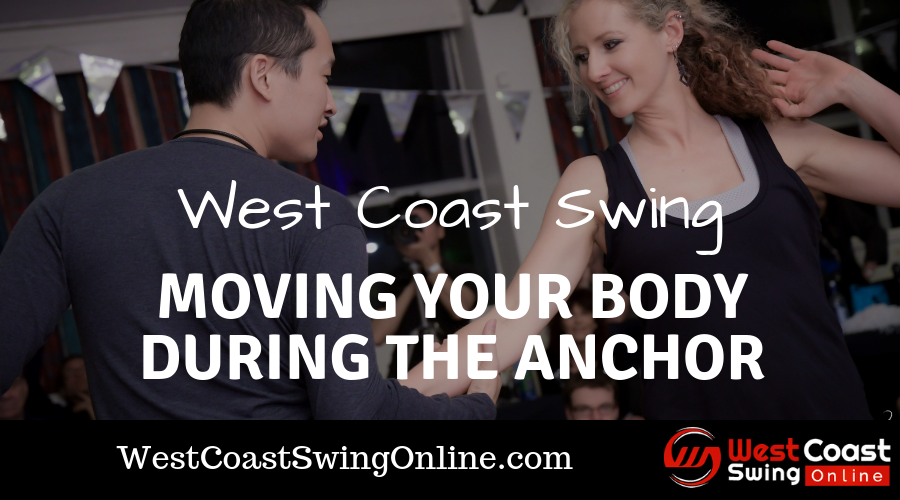One of the great elements of WCS is that each partner can add their own styling to the dance without throwing off the other partner.
But, that’s only possible once each partner learns to move without affecting the connection.
When styling, many dancers drag their connection point with them, pulling their partners off balance or undermining their frame.
Excellent dancers, by contrast, know how to dance so their partners can feel their styling, without moving their point of connection.
The next time you watch pros, notice how their bodies keep moving after they have posted. Even when they are anchoring, there is still movement through the body as they establish the stretch of the dance.
Beginner dancers struggle to move without taking the post with them. In this exercise, you’re going to practice moving around a point of connection so that you can free your body to move after establishing the post.
In this drill, you’ll practice dancing within your own frame so you can dance without moving your connection point.
This skill is essential for styling without negatively affecting the connection or your partner.
TAKE ACTION> Watch this drill on video
The Drill:
Find an edge of a surface that you can hold onto—the lip of a sink, the frame of a door, or the handle of your refrigerator will work nicely.
Make sure that you have some space around the surface to move around.
Hold onto the edge as if it was your partner.
Move your center just slightly further away from the edge than your feet so you can feel a connection.
This should be slight: if you have enough force to open the fridge or move a door, you’ve gone too far.
You want just a little bit of away energy.
While maintaining that position, try to move around the edge. You can move closer or further away by adjusting the distance from your center to your elbow, and you can move side to side by pivoting around your shoulder or wrist.
No matter where you move, try to maintain the hand position and the away connection that you initially established.
As you become comfortable moving your body without disrupting the connection, you can start putting in footwork or styling variations.
You can do body isolations, footwork, arm styling, or any other motion that you might use in your WCS.
Focus on dancing underneath your hips and keeping your back active so you don’t overextend your arms.
Make sure that you aren’t moving your hand!
Use your wrist, elbow, and shoulder in order to isolate the body’s motion from your hand’s connection point.
Voila. You’ve isolated your connection point and you’ll be able to style without negatively effecting your partner!




 Brian & Megan
Brian & Megan